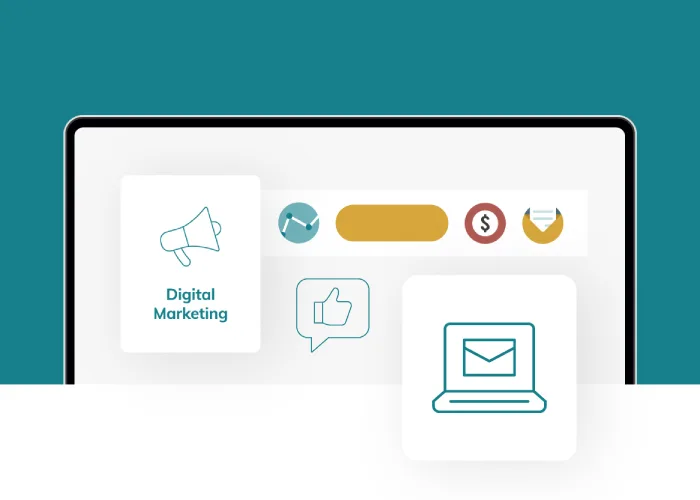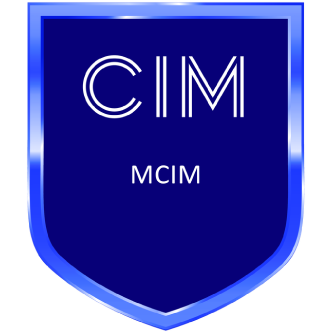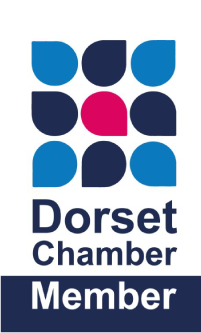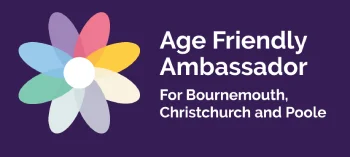
Marketing can often feel overwhelming when you’re running a small business. You’re busy managing operations, serving customers, and handling finances, so it’s easy to let marketing slip to the back burner. But here’s the truth: Without a solid digital marketing strategy, it’s tough to stand out and attract customers in today’s competitive landscape.
If you focus on the right marketing strategies, you’ll increase visibility, build trust, and consistently drive new business. Let’s dive into the practical steps you can take to create and optimise your digital marketing strategy today.
Why Digital Marketing is Non-Negotiable
People are online more than ever—researching businesses, reading reviews, and comparing options. If you don’t have a strong presence on the web, your potential customers may not even know you exist. A clear digital marketing strategy ensures you’re discoverable and memorable.
Here’s why it matters:
- Increase brand awareness: Become the go-to business in your niche.
- Drive consistent leads: Attract qualified traffic to your website or storefront.
- Strengthen customer loyalty: Use online channels to engage and retain customers through regular, valuable communication.
1. Define Clear and Measurable Goals
Your marketing efforts will only succeed if you know what you want to achieve. Start by identifying specific goals that align with your business needs.
Examples of measurable goals:
- Increase your website traffic by 20% within six months.
- Get 30 new leads per month through your website.
- Grow your Instagram following by 500 targeted followers in three months.
- Boost your email open rates by 10% with better subject lines.
Implement this: Write down 3–5 marketing goals using the SMART framework (Specific, Measurable, Achievable, Relevant, and Time-bound). Break them down into smaller monthly targets to track your progress consistently.
2. Understand Your Ideal Customers
Without a clear understanding of your customers, your marketing will lack focus. You want to craft messages that speak directly to their needs, preferences, and pain points.
Here’s how to get started:
- Survey your existing customers: Ask them why they chose your business, what they value most, and what problems your product or service solves.
- Analyse data: Use tools like Google Analytics to see who visits your site, where they come from, and what content they engage with most.
- Create audience profiles: Identify key traits like age, location, buying habits, and interests.
Implement this: Create a customer profile and list 3–5 key problems your business solves. Tailor your website content and social media posts around these problems and solutions.
3. Optimise Your Website for SEO
Search Engine Optimisation (SEO) helps potential customers find you on Google. Small improvements to your website can boost your visibility and increase traffic.
SEO basics to focus on:
- Identify target keywords: Use free tools like Google Keyword Planner or Ubersuggest to find search terms related to your business.
- Update meta titles and descriptions: Each page on your website should have a unique, keyword-optimised title and description to improve search rankings.
- Improve site speed: Use a tool like PageSpeed Insights to test your website speed and follow recommendations to optimise it.
Implement this: Identify 3–5 keywords you want to rank for and update your homepage or service page content to include these keywords naturally.
4. Develop a Content Strategy
Content is how you attract, engage, and educate your audience. When you regularly share helpful, valuable content, you establish credibility and keep customers coming back.
Types of content to consider:
- Blog posts: Answer common customer questions or share tips relevant to your industry.
- Social media posts: Showcase behind-the-scenes content, success stories, or customer testimonials.
- Videos: Create short, informative videos for platforms like Instagram Reels or YouTube.
Implement this: Brainstorm 10 questions your customers frequently ask. Create a content calendar to publish blog posts, videos, or social posts that answer these questions.
5. Leverage Social Media
Social media is essential for engaging with both existing and potential customers. However, you don’t need to be active on every platform—focus on where your audience is most active.
Social media best practices:
- Be consistent: Post regularly, even if it’s just a few times a week. Consistency builds trust and familiarity.
- Engage with your audience: Respond to comments, share user-generated content, and participate in conversations.
- Track performance: Use analytics tools to measure what types of content perform best.
Implement this: Choose 1–2 platforms to focus on. Schedule your posts in advance using free tools like Buffer or Meta Business Suite. Aim for a balance of promotional, educational, and entertaining content.
6. Build and Grow Your Email List
Email marketing gives you direct access to your customers without being at the mercy of social media algorithms. Building and nurturing your list can lead to higher customer retention and repeat sales.
How to grow your email list:
- Offer a lead magnet: Create a valuable resource, such as a guide or discount code, to encourage sign-ups.
- Use email automation: Set up welcome emails, abandoned cart reminders, and follow-up sequences to stay engaged with your subscribers.
- Segment your list: Group your contacts by preferences or purchase history to send targeted messages.
Implement this: Create a lead magnet related to your business (e.g., a free checklist or a discount offer). Promote it on your website and social media channels.

7. Invest in Paid Advertising
Organic marketing takes time to build, but paid ads can help you get immediate results. Platforms like Google Ads, Facebook Ads, and Instagram Ads allow you to target specific audiences based on interests, location, and behaviour.
Paid ad tips:
- Start with retargeting ads: Focus on people who’ve already visited your website or engaged with your content.
- Test your messaging: Experiment with different headlines, visuals, and offers to see what resonates.
- Monitor your ROI: Regularly review your ad performance and adjust your budget accordingly.
Implement this: Run a small-budget ad campaign promoting one of your best-selling products or services. Track conversions to determine the campaign’s effectiveness.
8. Track and Adjust Your Strategy
Marketing success comes from constant testing and refinement. By regularly reviewing your performance data, you can identify what works and what needs improvement.
Metrics to track:
- Website traffic (via Google Analytics)
- Conversion rates (e.g., how many visitors turn into leads or customers)
- Social media engagement (likes, comments, shares)
- Email open and click-through rates
Implement this: Set a recurring date each month to review your marketing metrics. Use this data to optimise your campaigns and content for better results.
9. Collaborate with Other Local Businesses
Partnering with other small businesses in your area can amplify your marketing efforts without a huge budget. Collaboration can help you reach new audiences and build stronger community ties.
Ideas for collaboration:
- Cross-promotions: Offer discounts or deals to each other’s customers.
- Joint events: Co-host a workshop, event, or webinar that attracts both of your customer bases.
- Content partnerships: Write guest blog posts for each other’s websites or feature each other on social media.
Implement this: Reach out to a local business that complements your own (e.g., a café collaborating with a nearby gym) and propose a joint promotion or event.
10. Prioritise Local SEO
If your small business relies on foot traffic or serves a specific geographical area, local SEO is a must. This strategy ensures your business appears in search results when people in your area are looking for products or services like yours.
Key local SEO tactics:
- Google Business Profile: Claim and optimise your profile by adding your business hours, services, and photos. Encourage customers to leave reviews.
- Local keywords: Incorporate location-based terms (e.g., ‘Melbourne electrician’) into your website copy.
- Online directories: Ensure your business is listed on relevant directories such as Yelp, Bing Places, and industry-specific sites.
Implement this: Optimise your Google Business Profile by uploading high-quality photos and regularly updating your business information.
11. Make the Most of Customer Reviews and Testimonials
Word-of-mouth is powerful, and in the digital age, it often takes the form of online reviews. Positive reviews and testimonials help build trust and credibility, which is crucial for small businesses competing with larger brands.
How to gather and use reviews:
- Ask for feedback: After a sale or service, follow up with a polite request for a review.
- Showcase testimonials: Feature glowing reviews on your website, social media, and marketing materials.
- Respond to reviews: Thank customers for positive feedback and professionally address any negative comments to show you’re attentive to customer needs.
Implement this: Send an email to your top customers asking for reviews on platforms like Google, Yelp, or Facebook. Include a direct link to make it easy.
Have a Question About Small Business Marketing Strategy?
What is a digital marketing strategy?
A digital marketing strategy is a plan that outlines how your business will achieve its marketing goals using online channels such as your website, social media, email marketing, and paid advertising. It helps ensure your efforts are aligned, measurable, and targeted to the right audience.
Why is digital marketing important for small businesses?
Digital marketing helps small businesses compete with larger brands by providing affordable and effective ways to reach potential customers. It increases your visibility, builds credibility, and generates leads through platforms where your audience spends time, such as search engines and social media.
How can I measure the success of my digital marketing efforts?
You can track success through key performance indicators (KPIs) such as:
- Website traffic (measured with Google Analytics)
- Conversion rates (e.g., how many visitors turn into leads or customers)
- Email open and click-through rates
- Social media engagement (likes, comments, and shares)
Monitoring these metrics helps you adjust your strategy for better results.
How much should I budget for digital marketing as a small business?
There’s no one-size-fits-all answer, but a common guideline is to allocate 5-10% of your annual revenue to marketing. Start small by investing in essential strategies like SEO, email marketing, and social media. Once you see results, you can increase your budget to include paid advertising or advanced tools.
Do I need to be on every social media platform?
No, it’s better to focus on the platforms where your audience is most active. For example, LinkedIn may be ideal if you run a B2B business, while Instagram or Facebook may be more effective for retail or lifestyle brands. Consistency and engagement on one or two platforms will yield better results than spreading yourself too thin across many.
How long does it take to see results from digital marketing?
The timeline varies depending on the strategies you implement.
- SEO: Results may take 3-6 months as search engines gradually rank your website.
- Content marketing: You’ll see traction as you publish consistently and attract more visitors.
- Social media and email marketing: These can deliver quicker results, especially with engaging content or promotions.
Patience and consistency are key to long-term success.
What is local SEO, and why is it important for small businesses?
Local SEO helps your business appear in search results for location-based queries, such as ‘nearby restaurants’ or ‘Melbourne hair salon.’ Optimising your Google Business Profile, using local keywords, and ensuring your business is listed on relevant directories improves your chances of attracting nearby customers.
How can I create content that attracts and retains customers?
Create content that is valuable, educational, and tailored to your customers’ needs. Focus on answering common questions, offering tips, or sharing success stories. Use a mix of formats, such as blog posts, videos, and social media updates, to keep your content fresh and engaging.
Is paid advertising worth it for small businesses?
Yes, if done strategically. Paid ads on platforms like Google and Facebook can help you reach new customers quickly, especially when targeting specific demographics or retargeting website visitors. Start with a small budget to test different ad formats and messages, then optimise based on performance.
How do I get started with a digital marketing strategy?
Start by defining your goals and understanding your audience. Next, optimise your website for SEO, create a content calendar, and choose one or two social media platforms to focus on. Regularly review your performance metrics to make improvements. For a more tailored approach, consider booking a Digital Roadmap Session for expert guidance and strategy development.

Start Small and Stay Consistent
You don’t have to master every digital marketing tactic at once. Focus on a few core strategies—like SEO, content, and social media—then build on your success over time. Small, consistent actions will compound into significant growth for your business.
Take Action Today
- Set 3 clear marketing goals.
- Research and implement basic SEO improvements.
- Create your first piece of content based on a common customer question.
- Start growing your email list.
By focusing on your digital marketing strategy, you’ll create sustainable, long-term success for your small business.
Let’s Plan Your Digital Marketing Success Together
You’ve discovered practical steps to strengthen your small business’s online presence. Now, it’s time to take things further with a plan designed specifically for your goals. Our Digital Roadmap Session offers a thorough analysis of your current marketing efforts and delivers a clear, actionable strategy to help drive growth.
In just two sessions, you’ll gain valuable insights, practical recommendations, and a tailored plan to achieve your objectives. Don’t tackle the complexities of digital marketing alone.
Book your Digital Roadmap Session today and start building a path to measurable results.









